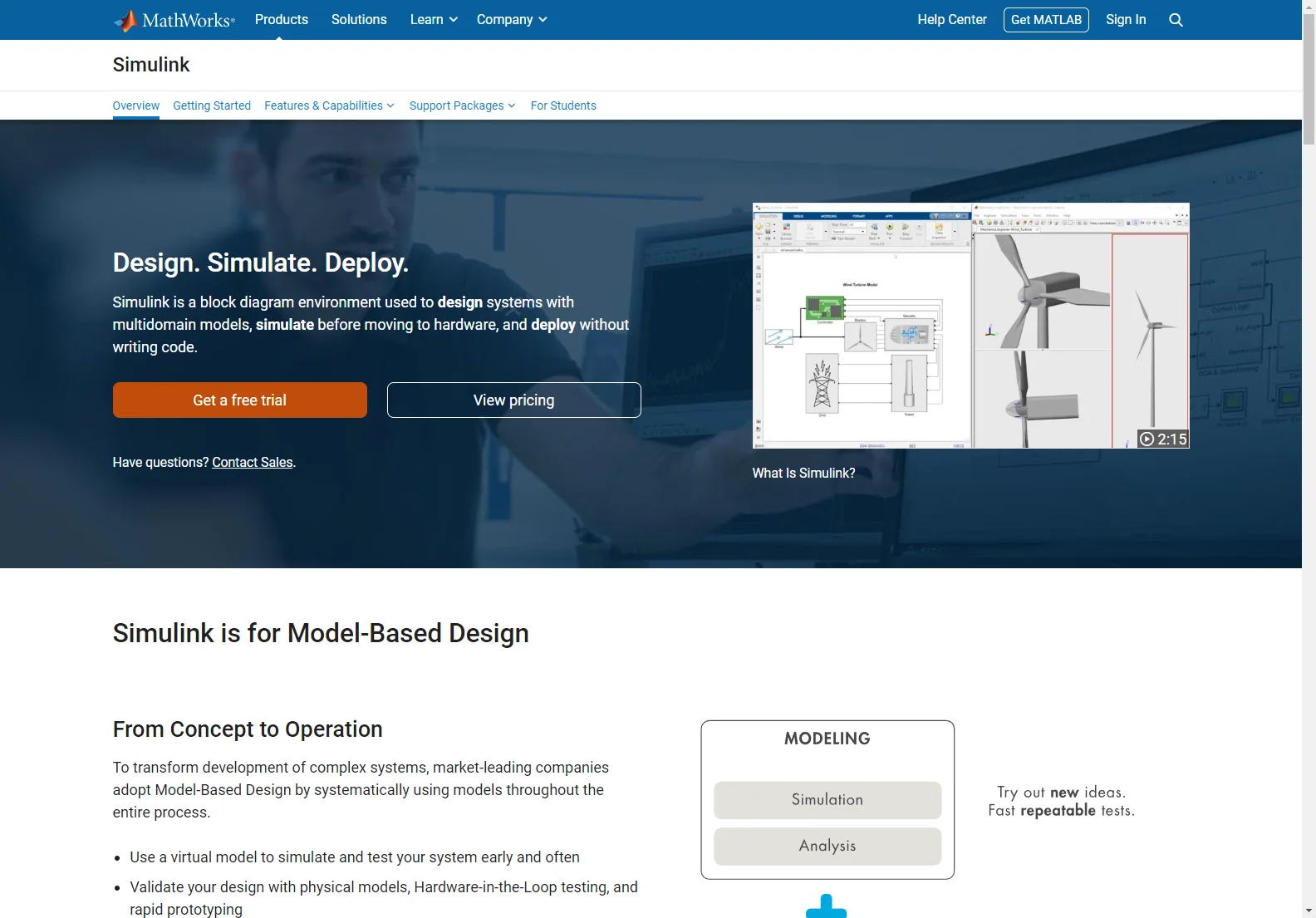Simulink stands as a cornerstone in the realm of Model-Based Design, offering a comprehensive block diagram environment that caters to the simulation and design of multidomain systems. This powerful tool facilitates the seamless transition from concept to operation, allowing engineers and designers to simulate their systems thoroughly before moving to hardware. With Simulink, the process of deploying systems becomes more efficient, eliminating the need for manual code writing.
At its core, Simulink is designed to transform the development of complex systems. It enables market-leading companies to adopt Model-Based Design by systematically using models throughout the entire development process. This approach not only enhances the efficiency of system design but also ensures a higher level of accuracy and reliability. By using a virtual model to simulate and test systems early and often, Simulink helps in validating designs with physical models, Hardware-in-the-Loop testing, and rapid prototyping.
One of the standout features of Simulink is its ability to generate production-quality code in various programming languages, including C, C++, CUDA, PLC, Verilog, and VHDL. This capability allows for direct deployment to embedded systems, maintaining a digital thread with traceability through requirements, system architecture, component design, code, and tests. Furthermore, Simulink extends its utility to systems in operation, enabling predictive maintenance and fault analysis.
Simulink's simulation capabilities are unparalleled, offering a wide design space for testing systems early with multidomain modeling and simulation. It supports the evaluation of multiple design ideas in a single multidomain simulation environment, simulating large-scale system models with reusable components and libraries. The deployment of simulation models for desktop, real-time, and Hardware-in-the-Loop testing is streamlined, with the ability to run large simulations on multicore desktops, clusters, and the cloud.
For those involved in Model-Based Systems Engineering (MBSE), Simulink bridges development from requirements and system architecture to detailed component design, implementation, and testing. It supports the capture and decomposition of requirements, the definition of specifications for components, compositions, and architectures, and the establishment of a single-source for architecture and component-level interfaces. Simulink also facilitates analysis and trade studies using MATLAB, validating requirements and verifying system architectures through simulation-based tests.
Agile software development teams will find Simulink particularly beneficial, as it shortens the development cycle through simulation, automated testing, and code generation. This enables teams to deliver value to their customers faster, respond to changing requirements quickly, and make progress visible to key stakeholders with automated reports and dashboards.
Simulink's integration with MATLAB combines the power of textual and graphical programming in one environment, allowing users to optimize parameters, create new blocks, write tests and automation scripts, run thousands of simulations in parallel, and analyze simulation results. Whether your project involves Artificial Intelligence, Wireless Communications, Electrification, Control Systems, Signal Processing, Autonomous Systems and Robotics, Advanced Driver Assistance Systems, or Digital Twins, Simulink is equipped to support your endeavors.
With instant access through a free 30-day trial, Simulink invites users to explore its capabilities and discover how it can enhance their system design and simulation processes. Whether you're working on desktop, real-time, or Hardware-in-the-Loop testing, Simulink offers a comprehensive solution for your simulation and Model-Based Design needs.

